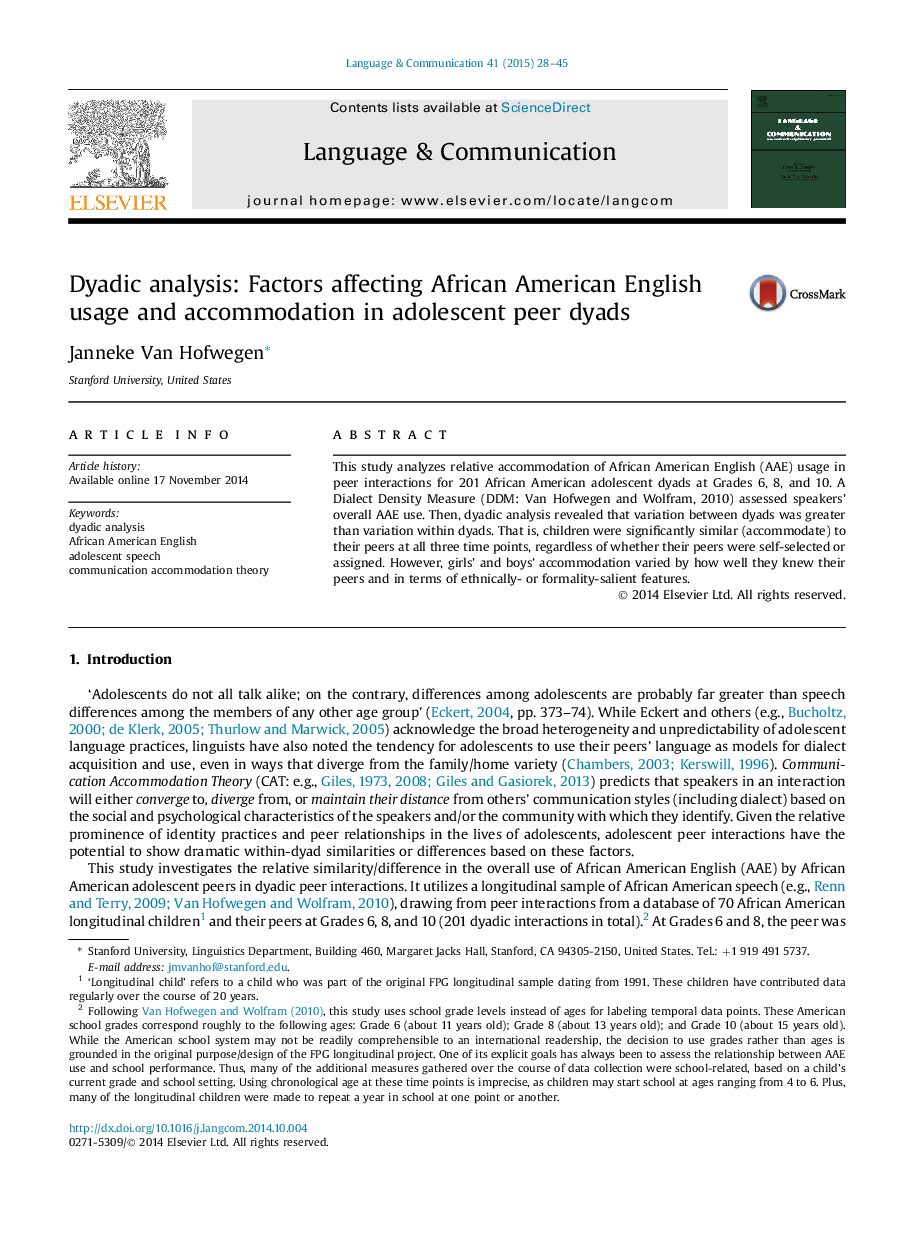| کد مقاله | کد نشریه | سال انتشار | مقاله انگلیسی | نسخه تمام متن |
|---|---|---|---|---|
| 935173 | 1474924 | 2015 | 18 صفحه PDF | دانلود رایگان |

• African American adolescent same-age and -gender dyads accommodate in dialect usage.
• Girls and boys accommodate differently based on whether they know their peers.
• Dyadic analysis using intraclass correlation coefficients can assess accommodation.
• Ethnic and psycho-social factors affect accommodation in African American dyads.
• Girls and boys accommodate differently with ethnically- and formality-based features.
This study analyzes relative accommodation of African American English (AAE) usage in peer interactions for 201 African American adolescent dyads at Grades 6, 8, and 10. A Dialect Density Measure (DDM: Van Hofwegen and Wolfram, 2010) assessed speakers' overall AAE use. Then, dyadic analysis revealed that variation between dyads was greater than variation within dyads. That is, children were significantly similar (accommodate) to their peers at all three time points, regardless of whether their peers were self-selected or assigned. However, girls' and boys' accommodation varied by how well they knew their peers and in terms of ethnically- or formality-salient features.
Journal: Language & Communication - Volume 41, March 2015, Pages 28–45